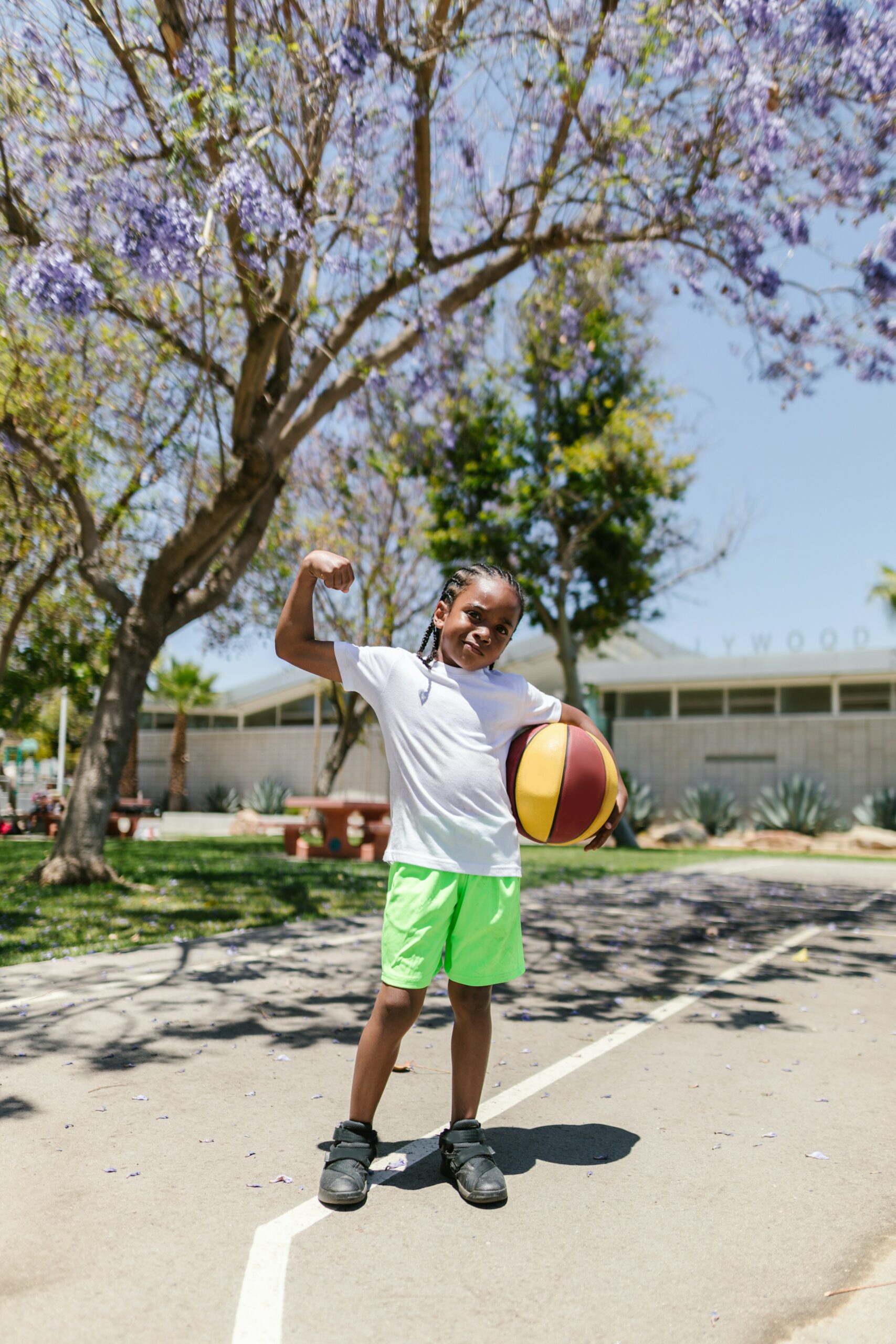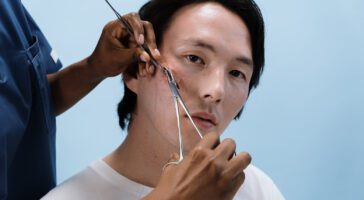Urgent Care
Diagnosis, treatment, and services for your everyday medical needs such as flu shots and lab work.
Jan 30, 2023

Believe it or not, sports injuries are the second leading cause of emergency room visits for children and adolescents, and the second leading cause of injuries in school. Millions of children are seen in hospital emergency rooms for sports-related injuries, and even more, are seen by their primary care physician or a sports medicine clinic for injuries. This is attributable to the fact that young athletes often begin their competitive sports careers as early as age seven, with some youth participating in organized sports activities as early as age four.
A child can endure many different injuries when playing a sport and understanding how to prevent them is crucial to your child’s longevity. Our country’s obsession with sports—football, basketball, and baseball being the most popular, plays a major role in why kids start playing them so young. Even though sports teach many great life lessons such as accountability, being a team player, and hard work, there are still a plethora of injuries your child may face, which is why it’s so important to be as informed as you can.
The first step toward preventing sports-related injuries is understanding how they happen. There are plenty of reasons why they occur, but the most popular reasons are due to poor equipment and technique, overuse, lack of instruction, or simply bad luck! Of course, you can’t anticipate every injury, and some are simply unavoidable, however, your child can reduce their risk of hurting themselves by practicing safe methods of playing.
Injuries can happen anywhere there are bodies in motion. However, some youth sports involve a higher degree of impact than others, including football, rugby, and hockey. Basketball, and soccer. These sports require athletes to run fast, tackle, and sometimes even collide straight into one another. From the outside looking in, this is a recipe for disaster, but sports require great strength and at times violence which makes it all the more important to be as safe as possible.
The truth is no sport or activity is 100% safe. And beyond the ice, injuries can also happen at the playground as well as on the surfboard or skatepark. However, with the right equipment, coaching and technique, your kids can still have fun while playing safe!
According to the American Academy of Pediatrics, children have more than 3.5 million sports injuries each year. All sports carry a risk of injury and while there are steps you can take to prevent sports injuries; these common injuries may still occur.
Sports injuries in children can often be treated with Rest, Ice, Compression, and Elevation (RICE). However, sometimes you should see an orthopedic specialist. If your child experiences one of the following injuries and has symptoms that don’t resolve with home treatment, see your healthcare provider.
One of the most common sports injuries in children is ankle sprains. Ankle sprains occur when the ligaments that support the ankle stretch and tear. This can happen in sports like basketball, tennis, soccer, and football that require cutting or twisting actions. Ankle sprains cause pain, tenderness, swelling, bruising, and instability of the ankle. Most sprains are minor injuries that heal with the RICE protocol, but sometimes they require treatment by an orthopedic specialist.
The anterior cruciate ligament (ACL) is one of the major ligaments that stabilize the knee joint. It connects the femur to the tibia. An ACL tear can occur due to a blow to the outside of the knee or without impact after a jump or twist. ACL tears are most common in kids that play basketball, volleyball, tennis, and soccer. An ACL tear causes pain, swelling, and limited movement in the knee.
Osgood-Schlatter is another type of knee pain that is different from an ACL tear. It is a traction injury (also known as a stretch injury) to a growth plate at the top of the shin bone called an apophysis. The injury is caused by tightness in the muscles coupled with high activity levels. The injury may present with pain and swelling or a bump at the bottom of the knee.
Little league elbow is caused by repetitive stress to the growth place located on the inside of a child’s elbow, resulting in pain and tenderness. It is common among baseball and softball players in positions such as pitcher, catcher, infielder, and outfielder. It may occur in other sports where repetitive throwing is required.
Like little league elbow, only it affects the shoulder and is caused by repetitive stress or micro trauma to the shoulder growth plate. This condition most commonly occurs among children between 11 and 14. As the name suggests, it is common in softball and baseball pitchers, but it can also occur in swimmers and tennis players.
Shin splints are common sports injuries in children that participate in sports that require repeated running on a hard surface. They can also be caused by overtraining at the beginning of the season without proper conditioning. Shin splints cause pain and discomfort in the front of the lower legs (the shins).
Spondylolysis is a stress fracture to the lumbar spine. A stress fracture occurs when a bone breaks after experiencing repeated stress from tension or compression. This injury usually occurs in the low back. It is most commonly seen in young athletes that participate in sports like gymnastics, tennis, rowing, weightlifter, and track and field.
Turf toe is the hyperextension of the big toe. It occurs when a young athlete pushes off the ground forcefully with the big toe being forced upward. The main symptom of these sports injuries in children is pain, but swelling may also be present.
Unfortunately, concussions are not uncommon sports injuries in children. They can occur in many sports as the result of a direct blow to the head. After such a direct hit, the child should be monitored for symptoms like headaches, blurred vision, dizziness, or confusion. While the treatment for most concussions is rest, all concussions should still be evaluated by a medical professional so they can recommend the proper treatment.
So, your child loves sports, all sports, and you are terrified that they are going to injure themselves. Rest assured, there are plenty of preventative measures you can take to ensure your child will be safe!
As your child learns about safe play, reinforce the good habits they’re discovering such as wearing proper safety equipment, following the rules, and getting adequate rest for their growing bodies. Talk to them about why those habits are important. Encourage them to make healthy habits a part of their daily life. The more support your child receives from their loved ones, the more they’ll feel motivated to do the right thing for their own health and wellness.
By communicating with your son or daughter’s coach, you can get a better idea of what your child is learning when it comes to technique and training methods. When you know what’s being taught in practice and on the field, you can help support healthy directions and be aware of common misconceptions that might be dangerous and lead to injury.
For both parents and coaches, mimicking good habits start with you. Whenever you participate in physical activities with your child, that being a pick-up game of basketball or a sprint around the neighborhood, teach your child the importance of warming up, cooling down, and proper stretching to avoid injury.
When the competitive drive takes hold, your child might start going all-out on exercising and practicing. It’s important to keep tabs to make sure that your kid’s workouts stay safe and reasonable. Healthcare professionals recommend at least one rest day per week and three months off from a sport each year. Talk to your child about the advantages of balance and control that can lead to physical and mental health setbacks.
Physical activity can greatly improve your child’s mental health, as long as it’s done in a safe and balanced approach. But watch out for issues like stress. The anxiety of an intensely competitive environment can negatively impact your child both on and off the court. You as the parent should provide healthy support and encouragement as well as understanding and guidance when times are rough.
Early recognition and treatment of injuries are key in returning athletes to their sport safely and promptly. Any injury that involves swelling, deformity, and/or loss of normal function should be seen by a physician immediately while all other injuries that appear to be minor should resolve themselves within a few days. With that being said, if the injury does not heal on its own, and your child is not back to full participation without pain, it is best to have him/her evaluated by a medical professional. Lingering injuries that go untreated can turn into chronic problems that require a much longer time away from the sport to allow the injury to heal properly.
Even though there are many injuries your child can sustain while playing their favorite sport, the risk-reward factor is worth it. Your child will build life-long relationships and skills that will teach them the ever-important value of teamwork and competition. Sports are an amazing way for kids to mature and prepare themselves for the real world, but if they do find themselves with a sports-related injury, Chai Care will always have your back!
* Legal disclaimer: The content of this article and the entire Chai Care blog is for educational purposes only; it does NOT constitute medical advice and must not be considered as such. Please consult a medical professional regarding any symptoms or health concerns you or your loved ones.

Nobody wants to spend hours sitting in a crowded emergency room, especially when you or your loved ones…

In today’s fast-paced world, time is a precious commodity, especially when it comes to healthcare. At Chai Care,…

Healthcare is the cornerstone of a thriving society, and at Chai Care, we firmly believe that it should…

In the fast-paced world of urgent care, every moment counts. When patients walk through our doors at Chai…

Major or small, we can all think back to a time when we cut, scraped, or grazed ourselves.…

Kids are bound to injure themselves at some point or another. Sometimes it’s a broken bone after taking…

There is no other way of saying it, but we all poop. It’s something every person does and…

Broken bones are no joke. Injuries like breaks and fractures can have long-term effects if gone untreated and…